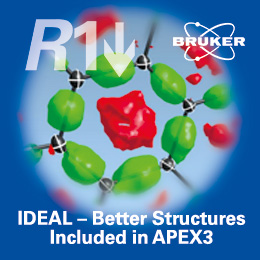


Meeting report (IUCr supported)
17th BCA/CCG Intensive Teaching School
![IUCr-BCA-CCG-School [IUCr-BCA-CCG-School]](https://www.iucr.org/__data/assets/image/0017/144440/IUCr_BCA_CCG-Teaching-School-2019.jpg)
The 17th BCA/CCG (British Crystallographic Association/Chemical Crystallography Group) Intensive Teaching School in X-ray Structure Analysis was held at Trevelyan College, Durham, UK, from 6 to 14 April 2019. The school had an international feel with just over a third of the 80 students being based outside the UK, from a total of 15 different countries: UK, Argentina, Australia, Austria, Chile, Croatia, Finland, Germany, Ireland, Malaysia, Malta, Poland, Singapore, Spain and Switzerland. The atmosphere throughout the school was very friendly and supportive, which was noted positively in feedback from a number of the students and staff alike, with the variety of nationalities, different academic backgrounds and range of crystallographic experience creating an interesting environment both for learning and meeting new people.
The school has both a national and an international reputation for providing a good basis in crystallography that meant that we were once again heavily oversubscribed. The format of the biennial course has evolved as a result of feedback from students and staff and currently consists of a mixture of lectures and tutorials designed to help students improve their understanding of the lecture material. The course, as the name suggests, is intensive with a full timetable across the seven days providing the students with the opportunity to gain a good theoretical understanding of various aspects of crystallography from a single-crystal perspective. Following an introductory lecture shortly after arrival, the lecturers, Simon Parsons, Lukas Palatinus, Andrew Bond, Helena Shepherd, Richard Cooper and Mark Senn, guided the students through the following topics over the course of the week: Maths, Symmetry, Data Collection, Fourier/Patterson, Charge Flipping, Superspace, Direct Methods, Parameterisation, Least Squares, Refinement, Derivation of Results and Twinning. The tutorials are organised such that each of the participants is assigned to a tutorial group for the week, which consists of eight tutees and a tutor who work together throughout the week to tackle a series of problems relating to the recent lecture material. This year we welcomed four new tutors: Christine Beavers, Laszlo Fabian, Claire Hobday and Hamish Yeung, as well as welcoming back Iain Oswald, Andrew Cairns, Nick Funnell, Amber Thompson, Claire Wilson and Hazel Sparkes. As usual the lectures and tutorials were held in the Sir James Knott Hall, which enables us to switch easily between formal lectures and tutorial work with minimal disruption. The accommodation and meals were provided in Collingwood College, which is less than a five-minute walk away but provided a pleasant chance for some fresh air and brief exercise during the day.
As is traditional at the school, apart from the Maths lecture on the first day, the evening activities are designed to be more relaxed and provide an opportunity for the students to mix with each other through a combination of educational and fun activities. On the Sunday evening, a successful bar quiz, organised by Professor Cooper, ended in a tight result with three of the teams being within one point of each other. The Monday evening session provided an introduction to Databases (Pete Wood) while the use of Synchrotron and Neutron facilities (Dr Beavers and Dr Senn) were highlighted on Tuesday. This year’s student presentations, on the Friday evening, were organised by Dr Funnell and Dr Hobday. Each of the tutor groups put together a short (about five minutes) presentation on a crystallographic topic drawn from a hat earlier in the week in a style that was also chosen at random, e.g. Local Structure in the style of Bake Off or The Bravais Lattice in the style of Bear Grylls (two popular UK TV programmes). All of the groups put together creative and amusing presentations on their respective topics, which created an enjoyable evening with much hilarity. As with previous years the educational and entertainment value of each presentation was assessed by our elite panel of judges, the lecturers, who were very impressed by all of the entries.
The conference dinner on the Saturday evening provided the chance to thank all of the people who had contributed to the success of this year’s school, the local staff, organisers, lecturers, tutors and students. The hard work and positive attitude from the staff and students alike all helped to create a very friendly school. After this year’s school Professor Parsons stepped down as scientific director. We would like to thank him very much for his contribution over the last 10 years; his enthusiasm and drive have helped maintain the high standards of the course while keeping up to date with current developments. We are delighted that Simon is staying on the lecturing staff for the next school and very pleased that Professor Cooper has taken over as the scientific director and wish him every success.
Following on from the school, an optional hands-on Olex2 workshop was held on the Sunday, run by Michael Bodensteiner and Oleg Dolomanov. This was well received by the ~40 registered participants who had the opportunity to use Olex2 to apply structure solution and refinement concepts that they had learnt on the course to both test structures and their own data.
We would like to finish by saying thank you to all of the sponsors for this year’s school: Diamond, IUCr, European Crystallographic Association, CCG, Industrial Group, Oxford Cryosystems, Bruker, Rigaku Oxford Diffraction, Cambrex and the National Crystallography Service. Without the financial support from these organisations we would not have been able to help as many students attend the school or run it so successfully and we are very grateful for their continued support.
IUCr support
The funds kindly provided by the IUCr were used to help three PhD students with contributions towards their subsistence; they share their experiences below.
Owen Missen (Monash University, Australia)
![[Missen]](https://www.iucr.org/__data/assets/image/0017/145016/Missen-pic-for-IUCr.png)
My mineralogical research (two-year Masters, currently nearly a year into my PhD) focuses on the ~20 minerals containing tellurium and oxygen that do not have reported crystal structures, requiring thorough re-investigation. Prior to the School, I had published three unique tellurium mineral structures after re-investigating old and poorly characterised minerals, each requiring detailed analysis of the crystal chemistry. Attending the School broadened my understanding of the underlying mathematics and rationale underpinning crystallography. Lectures on topics including symmetry, structural refinements and twinning (to name a few) will all help me as I continue to research mineralogical crystallography into the future. I express my gratitude again to the IUCr and hope to disseminate my future crystallographic results at IUCr conferences in years to come.
Federico Movilla (University of Buenos Aires, Argentina)
![[Movilla]](https://www.iucr.org/__data/assets/image/0017/145025/Movilla_photo.png)
Crystal engineering is the design and synthesis of crystalline solids with a particular purpose and specific properties. Three distinct activities can be identified as part of this definition, which themselves form a continuous sequence: (i) the study of intermolecular interactions, (ii) the study of packing modes in the context of these interactions with the aim of designing a strategy for crystal construction and (iii) the study of crystal properties. Thus, as a starting point, it is essential to perform high-quality single-crystal X-ray diffraction studies that lead successfully to the molecular and supramolecular structure of the studied systems. In the Crystal Engineering and Structural Chemistry Group of the Inorganic Chemistry Department at my university, we develop different projects based on amino acid and peptide derivatives using crystal engineering and crystallography. Thus, the continued training of the members of the group, especially PhD students, in these fields is always encouraged. I joined this group as an undergraduate student, and am currently in my first year as a PhD student. Consequently, I applied to attend the 17th BCA/CCG Intensive Teaching School in X-ray Structural Analysis at Durham University, one of the best in the area. The bursary granted to me made my participation in the school possible as the money in our grants available for traveling is very scarce.
All of the topics covered by the school were very useful, and I followed lectures given by some of the main researchers and developers of modern crystallography, which were essential to improve my knowledge. Outside the classroom, being in contact with young scientists from all over the world and having the opportunity to listen and share diverse ways of solving everyday crystallography issues was a fruitful experience and also let me create a new working network.
Nazhirah Nasri (University of Putra Malaysia, Malaysia)
![[Nasri]](https://www.iucr.org/__data/assets/image/0018/145026/Nazhirah-Nasri.png)
Metal–organic frameworks (MOFs) are a class of porous materials constructed from various organic linkers and metal ions. Among the reported MOFs, zeolitic imidazolate frameworks (ZIFs) have emerged as a promising subfamily of MOFs, possessing the advantages of both zeolites and MOFs. ZIFs are constructed from transition metals such as Zn2+ and Co2+ bridged to N-donor atoms of the imidazolate linkers in a tetrahedral cluster to form a neutral large framework. Zn2+ is surrounded by imidazolate linkers (Zn–Im–Zn), which is similar to the role of Si in zeolites, which is bonded to oxygen (Si–O–Si). Coincidentally, the bond angles of zeolites and ZIFs are similar. Nowadays, ZIFs have been investigated as drug carriers due to their special properties such as high surface area, large pore volume and high thermal and chemical stability.
In my PhD studies, I have been working on mixed-linker ZIFs and synthesised ZIFs using two, three and four different imidazolate linkers mixed with Zn2+ to produce large frameworks with a high surface area. The atomic position in the crystal structure and specific topology have allowed various coordination geometry due to the variation of imidazolate linkers in the crystal structures. However, these ZIFs are always associated with disorder due to solvent molecules and twinning problems.
The bursary from the IUCr allowed me to attend the 17th BCA/CCG Intensive Teaching School in X-ray Structure Analysis in Durham, and I learned a lot about the fundamental theory behind X-ray crystallography. The knowledge obtained throughout the course has helped me to solve single-crystal X-ray diffraction data, especially the disorder problems within ZIF structures. I also had the opportunity to meet great researchers in crystallography and obtain new ideas and perspectives for my research project. I also had a fun learning experience and made new friends.
Copyright © - All Rights Reserved - International Union of Crystallography






